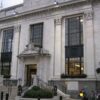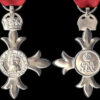No products in the cart.
Return To ShopIslington Council – public consultation for Clerkenwell Green improvements – please respond by 30 Oct
Dear Members and Friends of the Clerkenwell Green Preservation Society!
Islington Council has published a proposal for public consultation and requires feedback by 30th October, 2017. You may have already seen, or had delivered, their pack, which can be followed at www . islington . gov . uk/clerkenwellgreen.
Apologies for the short timeframe. The decision will not be made before Spring 2018, so there is a little leeway.
Our founder & president, Mrs Ann Pembroke, has written a thoughtful response which I copy at the bottom of this email.
Best regards
Nick Frei
————-
ISLINGTON COUNCIL INVITES YOU
“TO HAVE YOUR SAY” ON PROPOSALS
TO RESTORE THE PUBLIC OPEN SPACE
OF HISTORIC CLERKENWELL GREEN
Introduction
Many years ago Islington Council put forward plans to build a multi-storey building over the Public Conveniences on Clerkenwell Green. George Jennings, who put the first Public Conveniences in Hyde Park for the Great Exhibition of 1851, designed this public facility to be underground to ensure prison officers would have a clear view from the Middlesex Sessions House.
Thus my foundation of The Friends of Clerkenwell Green which evolved into The Clerkenwell Green Preservation Society Ltd., a company (limited by guarantee), being the local community dedicated to maintaining Clerkenwell Green as an historic public open space.
I started a campaign to stop this unwanted commercial development, with the assistance of our local M.P. Chris Smith, then Minister for Culture, Heritage & Sport. Displays by both parties were shown in The Old Sessions House and it became clear that the public wanted Clerkenwell Green to remain inviolate in respect of those who, through the ages, from Wat Tyler to William Gladstone spoke there to give us the freedoms we enjoy today. In fact, this public open space, a Place of Assembly, is maintained each May Day when protesters from all over the world flourish banners and placards, their children in national dress. Clerkenwell Green is the site of the origin of free speech in this country, being open ground between the Benedictine Nunnery of St. Mary and the Priory of St. John, where, being outside the City Walls, speakers were unlikely to be subject to arrest.
More recently men were on the Green with a cement mixer to pour molten cement down the tiled steps of the Victorian Public Conveniences, closed by the Council for many years. Seeking the advice of the Conservation Office, I proposed that metal sheets should be fixed over the steps which could be unlocked to allow access. The steps were saved.
Current Proposal
Islington Council has published a proposal for public consultation and requires feedback by 30th October, 2017. You may have already seen, or had delivered, their pack, which can be followed at www . islington . gov . uk/clerkenwellgreen. The decision will not be made before Spring 2018, so there is a little leeway.
As Director of The Clerkenwell Green Preservation Society, living and working on Clerkenwell Green since 1989, I was invited to be a member of the newly-formed Stakeholders’ Group. It was clear that the Council had a pretty rigid design which, although bringing the public open space of Clerkenwell Green back to its size and status, held inappropriate materials and implants.
The Society is delighted that its promulgations of removing all parking and “through” traffic is accepted, but we are concerned:
1. Trees It is proposed to remove “low quality” mature trees central to the Green to allow a vista to The Old Sessions House. This building occupying the entire west end of Clerkenwell Green is not concealed by foliage and, in the first Conservation Area designated by Islington Council in the Borough, there is no cause for any such splendid trees to be cut down. It would be vandalism. The new planting of a tree on the corner of Clerkenwell Green and Clerkenwell Close is objected to as a tree has never taken up this site. It would block the view of the Green and the root system could affect the old foundations of The Green House, with its Listed status. Similarly, the proposal to plant five trees at the entrance to Clerkenwell Green from Clerkenwell Road, already the site of two mature trees at this juncture, would block the view across the Green to the tower and spire of the 18th century St. James’ Church, a Protected View, if ever there was one! Approaching the village of Clerkenwell should not be obstructed by inappropriate planting.
2. Seating Copying from St. John’s Square, lengthy, close-set slabs is space-consuming and uncomfortable to see the illustration of a young man sitting cross-legged on top of a slab, balancing like a monkey. Individual seating, allowing privacy, with backs for support, are required as suitable for all ages. Samples of styles to be produced to effect choice. The slabs in St. John Square have been purposely damaged by knife, indicating disfavour. Public seating should be relaxing and easy to use. There is an opportunity to cover the stepped area around the Public Conveniences with flagstones as in Piccadilly Circus.
3. Surfaces for walking The Victorian granite setts, partially covered and patched with worn asphalt, to be cleaned. The proposed modern paviours in three colours are unsuited to this historic area as being more the style used at Supermarkets and, newly, at Waterloo Station. Originally, York flagstones surrounded the Green, removed to be replaced by small uneven paviours and bricks. Bring back the original York flagstones which match the period of the granite setts. Small mottled coloured, bluish grey and cream tiles as proposed are unsuited to this ancient site.
4. Tree Pits Not the modern cream-coloured gravel as photographed, but the traditional iron circular grids, sturdy and wholesome.
5. Loading Bays That for the Old Sessions House to be sited at the rear in Farringdon Lane. That opposite on the Green, to be removed. The current cobbled layby for the Crown Tavern being more practical, as adjacent to the pub. The third loading bay to be sited beyond the Church in Clerkenwell Close, close to the Three Kings pub, as the narrow highway “pinch point” will not be a safe site. Trundling beer barrels around Clerkenwell Green is not viable.
6. New Road, coloured grey on plan should be one-way , entering from Farringdon Lane, for use by delivery vehicles, ambulances and taxis only, traveling at 20 mph. This area cannot support 2-way traffic.
7. Statue of Sylvia Pankhurst This is a novelty, having not been introduced to meetings of the Stakeholder Group. No reason is given, when it is clear that for 1,000 years of history famed people spoke on Clerkenwelll Green, yet nobody considers the public open space of Assembly should be used hold statutary. Whereas Sylvia Pankhurst has no connection with Clerkenwell, she was not born here, speak here, work here, nor die here, which research at the Marx Memorial Library reveals. It is embarrassing that when Sylvia worked in the East End of London, Islington Council should seek to immortalise her away from her base. Is it because this statue, was intended by her supporters for Parliament Square, refused by the House of Lords, whereas that of Millicent Fawcett’s statue will take this place? Sylvia’s mother, Emily Pankhurst’s statue, is adjacent. Clerkenwell Green must not be subject to such placements. It is not the place for Sylvia’s statue. It is important that Clerkenwell Green remains uncluttered by personal whims It is a presumption to assume Sylvia’s statue will receive Planning Consent.
8. New Road from Aylesbury Street is to allow access to private garaging. It must not be used by “through” traffic wishing to avoid traffic lights on Clerkenwell Road, by cutting corners. Will a “No Entry” sign prevent this abuse?
9. “Explain the Social/Political History of Clerkenwell Green”, but no way forward given. Such is the significance of this site as the Origin of Free Speech in this country that it is necessary to record this history on a free-standing metal plate, held by two rods in the ground. As is the custom of London open spaces. Please supply wording for approval. Also, directions from Clerkenwell Green to the Clerks’ Well in Farringdon Lane, which will, hopefully be made more accessible for educational and touristic visits. To retain the spirit of the scene, this historic open space is not to be used for commercial ends.
10. George Jennings Public Conveniences of the year 1900, when the locality of Clerkenwell Green was in acute poverty, homes without hygiene and sanitary facilities. These Lavatories are not included in the Plan, although the sanitary fittings, pine panelling, brass and marble fittings are removed for conservation. Councillor Alice states that they will not be converted to an unnecessary café with insufficient space for seating, to make an impact on existing businesses of Rate-paying pubs and cafes on Clerkenwell Green. Alice tells me that £10,000 p.a. is required for wages of an Attendant. Is there a Sponsor out there, who would wish to see the Public Lavatories restored for use? Should my proposal, as a Governor of the Guildhall School of Music& Drama, 6th Formers act the Mystery Plays on the Green, as recorded in the 14th century. George Jennings’ Public Conveniences would be much appreciated as Changing Rooms, etc.
11. Santander Bicycle Stand Obstructive on Clerkenwell Green and preferably to be moved to the corner outside the Churchyard.
12. Clerkenwell Green is so important universally that, with the retirement from office of the three elected Clerkenwell Councillors in May 2018, their Successors will have the knowledge and power to implement the above proposals.
Ann M.F. Pembroke, OSt.J.,
Founder/Director,
The Clerkenwell Green Preservation Society Ltd.










Add comment